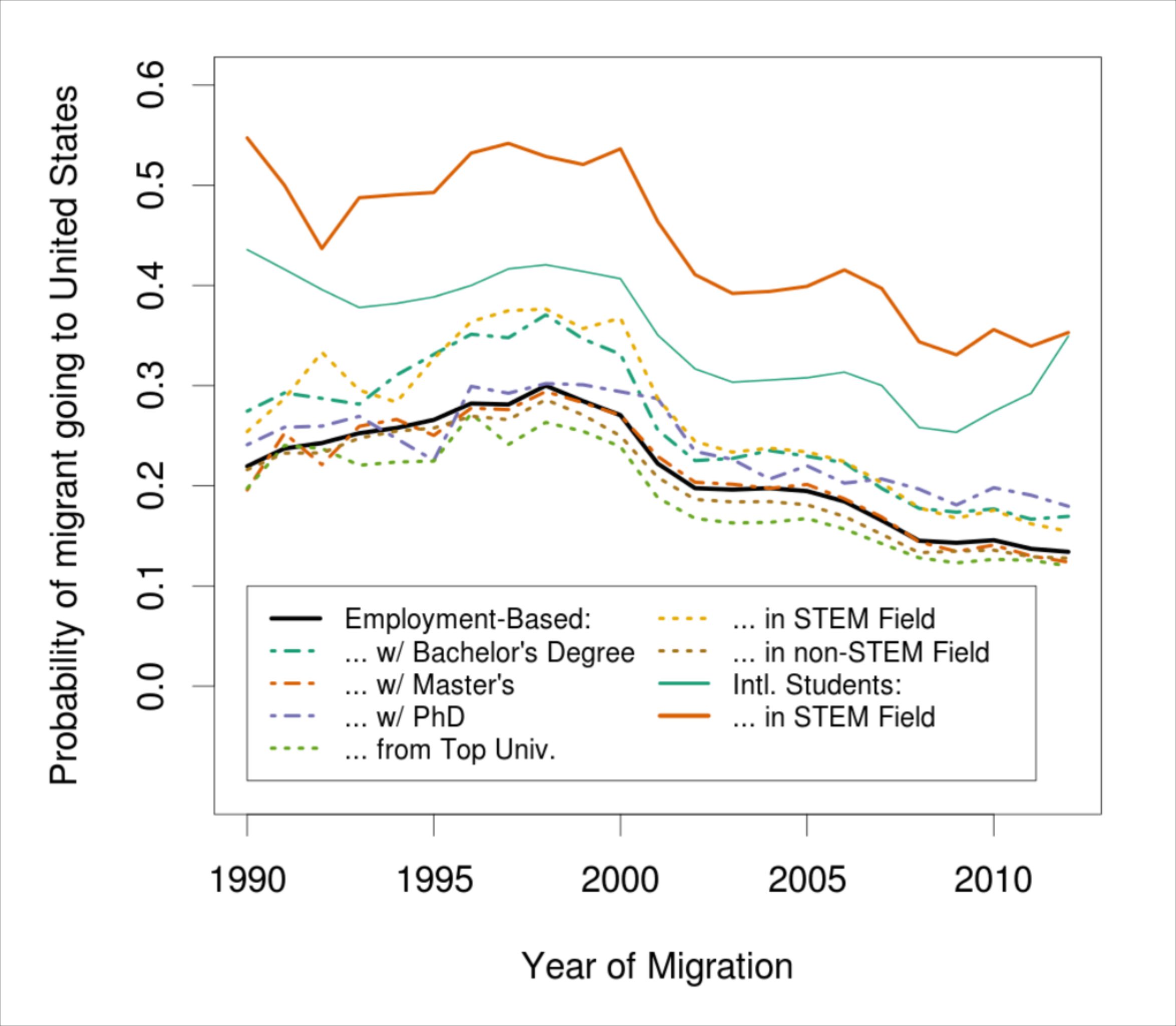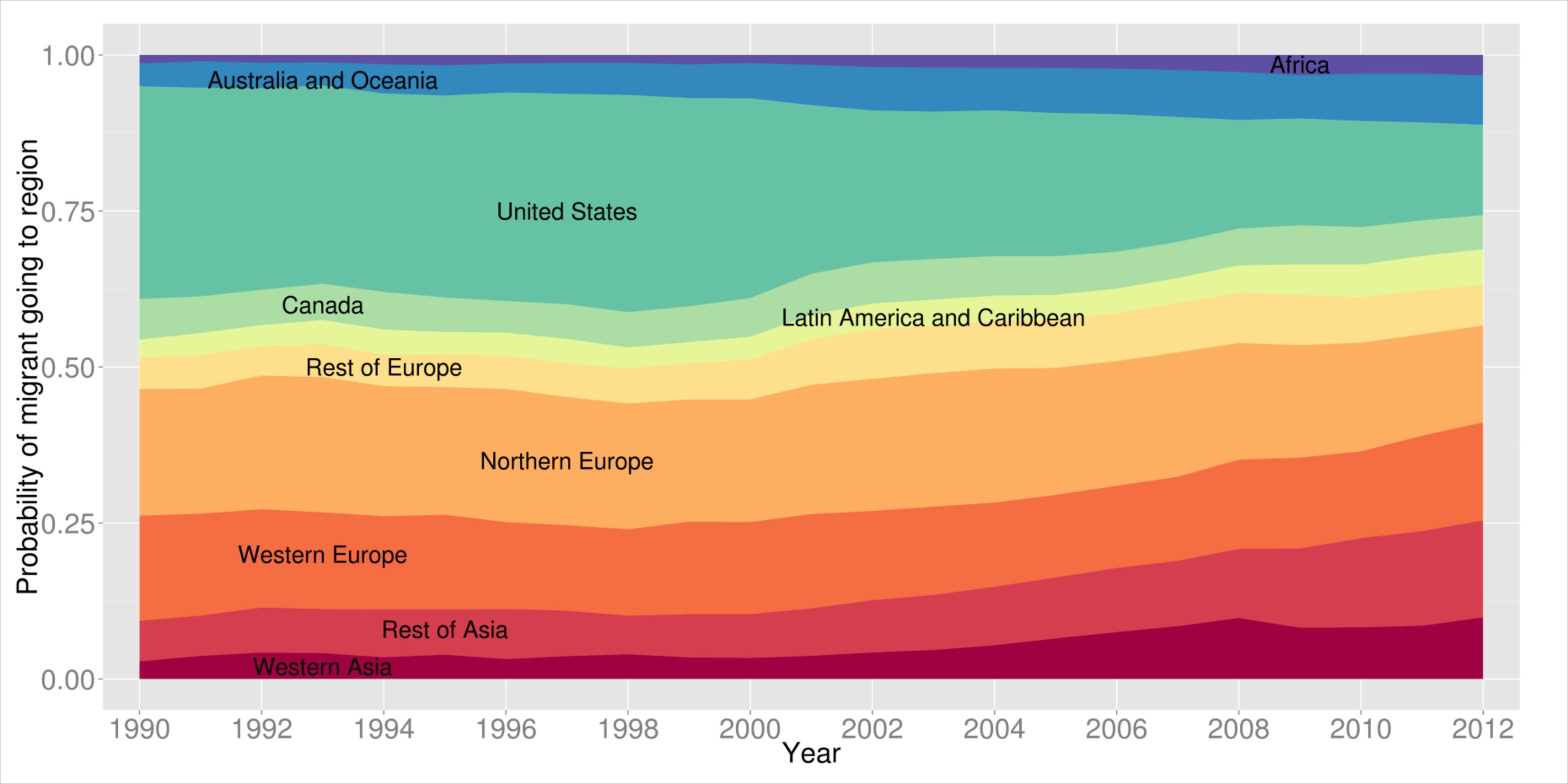Where Does the US Stand in the International Competition for Talent?
November 24, 2014
A new study shows strong evidence that, in the last decade, there has been a substantial decline in the proportion of professional migrants who have the United States as their country of destination. This study was recently presented at this year’s SocInfo, a Conference on Social Informatics in Barcelona, Spain.
I co-authored this paper with Bogdan State, who at the time was a Computational Social Science PhD student at Stanford University, to increase our understanding of the evolution of professional migration over the last couple of decades. The research also benefited from external advisors such as Emilio Zagheni, a UW assistant professor of sociology and fellow of the UW eScience Institute, and Dirk Helbing, a professor of sociology at ETH Zurich.
This research leveraged various aspects of LinkedIn’s Economic Graph to understand trends in migration patterns and mobility of human capital. The Economic Graph is a digital mapping of the global economy, comprised of a profile for every professional, company, job opportunity, the skills required to obtain those opportunities, every higher education organization, and all the professionally relevant knowledge associated with each of these entities.
This study aimed to measure highly-skilled, rather than overall, migration flows. We define highly-skilled migrants to be people who have bachelor’s, master’s, or PhD degrees achieved by the time of migration. By using aggregate data from millions of members in hundreds of countries, this study yielded the most comprehensive and up-to-date picture of international flows of highly-skilled migrants.
Respecting the privacy of LinkedIn’s members was a primary concern. To this end, we used algorithms to generate the aggregate dataset that was used in the study. Aggregate data in this form is free from any personally identifiable information.
Though the analysis confirms that the United States, in absolute terms, continues to be the top destination for international migrants, it presents strong evidence towards a fundamental shift. The results reveal a decline in the probability of employment-seeking migrants with a bachelor’s, master’s, or a PhD degree at the time of migration choosing the US as a destination. In addition, although a similar trend for international students can be observed, there is a recent uptick in their likelihood of going to the United States.

While the study did not aim to identify the reasons for this change in global migrations, two interesting facts can be observed: (1) Europe and Canada have seen a much gentler decline in professional migrants compared to the US, and (2) Australia, Africa, Latin America and, above all, Asia, have emerged as more prominent migration destinations for professionals. This pattern fits with an overall trend of a multi-polar realignment of the world economy, the so-called “rise of the rest.”

Very large datasets, such as the one used in this study, have the potential to reshape both science and policy in innumerable ways, especially in combination with existing data sources. This study intended to provide a step in this direction by analyzing highly-skilled migrations using social media data. Highly-skilled migration is an important demographic phenomenon with relevant consequences, for instance, in terms of human capital formation, a central issue in the study of economic development. For more information, check out the paper at the conference proceedings. The original study is also available here.